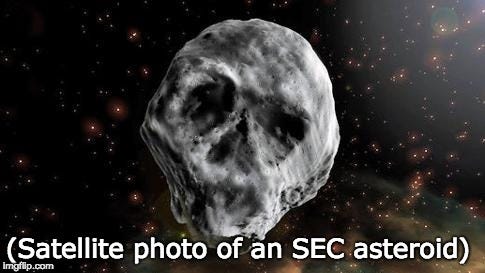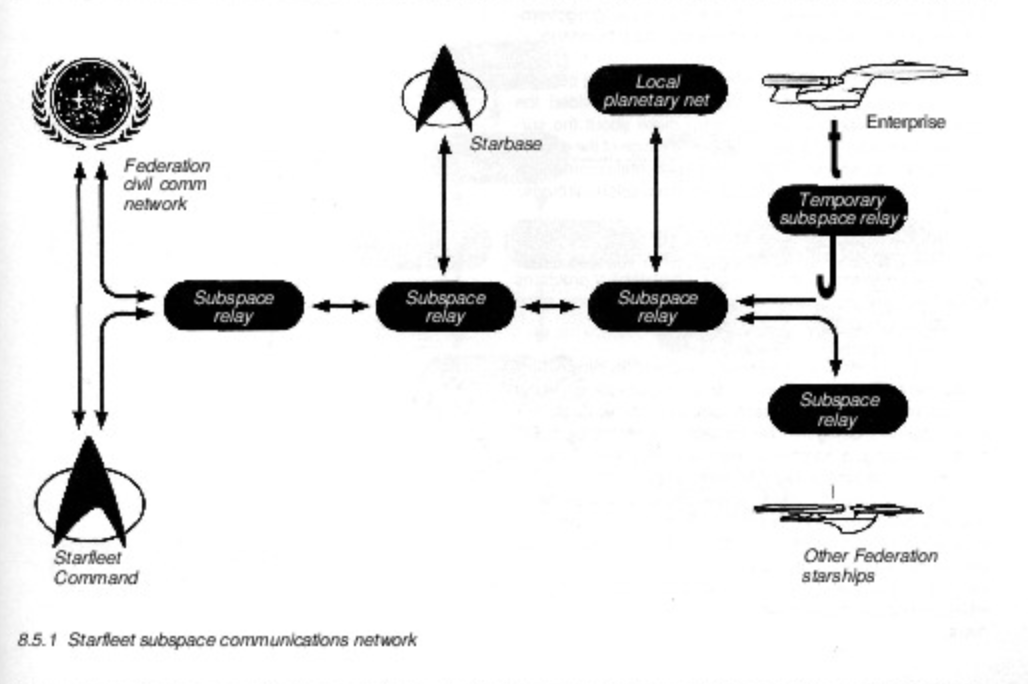Ethereum for Trekkies
“ The economies of the future are different ,” explains Captain Jean-Luc Picard. And indeed, us, the Aliens of the Cryptocurrency Universe, are building these. It’s only natural to find parallelisms to Star Trek. With his wise words in mind, we will explain some basic terms and notions on Ethereum.

“At its simplest, Ethereum is an open software platform based on blockchain technology that enables developers to build and deploy decentralized applications.” — from Blockgeeks Ethereum is an ecosystem. A United Federation of Planets of sorts. When Ethereum was first ideated by Vitalik Buterin (think of him as our Captain Kirk). Later, thanks to the yellow paper, written by Gavin Wood (our Professor Spock, I think?), they turned it into a world computer, supported by these smart contracts, that became applications. Many others were involved in this process. You can read more here.

Ethereum can then be used to build dApps on top of it, (decentralized applications, I’ll talk about them later), tokens (make sure they are utility tokens or you will get REKT by an SEC asteroid), and possibly anything you can think of — if we manage to scale, because lately, the network’s been congested by cats, polls, and other humanoid and non-humanoid beings.

Ethereum has a coin. Ether — something like your Latinum, correct? Right now, miners around the world (maybe could be parallelized with your replicators ) help us secure the blockchain via the Proof-of-Work consensus algorithm. In the future, this will be changed to an algorithm called Proof-of-Stake, or Casper. Yeah, we also have weird fantasy names. We also have gas, a fee that’s used to reward miners for putting stuff (transactions, smart contracts, Klingons, Vulcans, Kitties, basically anything)on the blockchain) Ethereum runs on top of a VM — our USS Enterprise. It’s called the Ethereum Virtual Machine and enables any application to run on top of the chain. Looks like we’ll be swapping this for a language called eWasm, sort of the change that the USS Enterprise experienced when passing from the Original Series to The Next Generation — WITH EXACTLY THE SAME CONTROVERSY, GO FIGURE. As in the United Federation of Planets, Ethereum unites many languages — human and programming languages. Rust, Solidity, WASM, Python, C++, and more can coexist and interoperate within Ethereum’s Turing-complete EVM. Now, what the hell are those decentralized applications? They are like your regular Earth applications, but the nice thing is that they don’t depend on any centralized server, and are much more secure. Most importantly, your data belongs to you. For instance, whereas the Subspace Communications Network works like this:
Our protocols, work like this (this graph is not updated, but you get the gist):
In the graph above, you can see how the sneaky Klingons of Status use the Whisper protocol for their dApp. As in Star Trek, we have relayers. And we use them. Quite a lot. How do we use them? For exchanging our tokens, for sending & receiving messages, for transferring data. Really, we love relayers! Check here how our Decentralized Exchanges (like Banks, without the bad guys and in a peer-to-peer way) use them. Ethereum can also be a platform for DAOs — Decentralized Autonomous Organizations . The way this federated governance structure works is not so clear in Star Trek — same as in the real world. In Ethereum, we want to make this better. We don’t want Khans, Moriartys, but we also don’t to centralize power in good actors, not even one as cool as Picard. We want to be self-sovereign. So, in our UFP, we are building these organizations. In a DAO of Vulcans, there would be no Vulcan High Command. All Vulcans would vote for the decisions taken. There are many governance systems for the different DAO frameworks being worked on, so if you happen to be a Klingon, a Borg, a Human, a Vulcan or any UFP member searching for the future of your planet, you can maybe hit Aragon up, they build DAOs and they just launched in the Ethereum Mainnet (Ethereum has Testnets, to test our technology, and once our products are ready they are launched into the wider galaxy, called Mainnet).

Still not convinced?
In Ethereum, we have ERC-721 , a token standard which is tied to digital scarcity. Star Trek’s economy is about a post-scarcity system called the “New World Economy”. Goods are created where and when needed. Well, I am no economist, not even a fortune teller. So I am not sure if we will have a post-scarcity economy, however, it is an interesting thought that we can tinker with. Maybe this is what awaits us, who knows, we’re, after all, boldly going where no one has gone before!
As a part of the crypto movement #ShatnerHODL my contribution to the community is this attempt to explain Ethereum, otherwise known as “what my mom does not understand I’m working on” for the Star Trek Fans. Let’s give this a shot, I reckon Trekkies will be easier to convince than Mom. Disclaimer: this is a humoristic text — I actually know a bit more about Ethereum than this so don’t even try to attempt to factually correct me . What I don’t know shit is about Star Trek but this is my 5th day down your rabbit hole, so BETTER APPRECIATE IT. Helena Flack and Chelsea Palmer thanks for your proofreading and help!
- Kauri original title: Ethereum for Trekkies
- Kauri original link: https://kauri.io/ethereum-for-trekkies/def2b053db4f472d83e8dedec8357f49/a
- Kauri original author: ShatnerHODL (@shatnerhodl)
- Kauri original Publication date: 2018-11-13
- Kauri original tags: none
- Kauri original hash: QmUuBYNeHaUKg28aMwyugUXAWvVVqhuWwgKqR368wTmbzr
- Kauri original checkpoint: QmRS3wCLX2MRi62bg9NTM89qNkgm3XjpKXciLvCKAr1f1g

